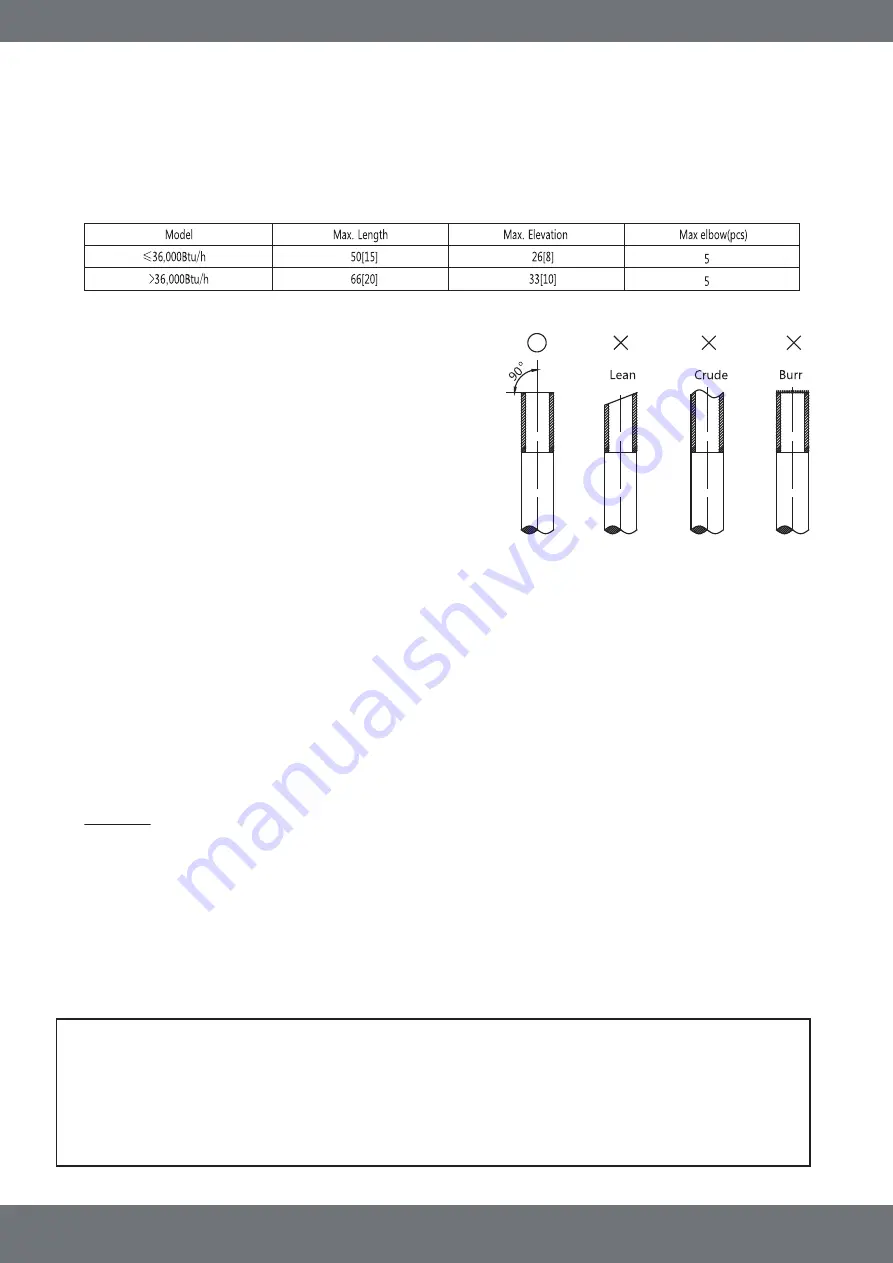
10. Refrigerant Pipe Installation
OUTDOOR UNIT
mrcool.com | Page 13
Maximum pipe length and height drop
Consider the allowable pipe length and height drop when deciding the installation position. Make sure the
distance and height drop between the indoor and outdoor units do not exceed the data in the following
table.
CAUTION:
Dry nitrogen should always be flowing through the tubing while it is being
brazed, because the temperature required is high enough to cause oxidation of the
copper unless an inert atmosphere is provided. The flow of dry nitrogen should
continue until the joint has cooled. Always use a pressure regulator and safety valve to
ensure that only low pressure dry nitrogen is introduced into the tubing. Only a small
amount of flow is necessary to displace air and prevent oxidation.
Fig.10-1
Table - 4
Ft. (M)
Ft. (M)
The procedure of connecting pipes
1. Choose the pipe size according to
Table 4
above.
2. Confirm the cross way of the pipes.
3. Measure the necessary pipe length.
4. Cut the selected pipe with pipe cutter making the
section flat and smooth. Refer to
Fig. 10-1
5. Insulate the copper pipe.
6. Before test operation, the joint parts should not
be heat insulated.
7. Drill holes if the pipes need to pass through the wall.
8. Bend the pipes if necessary to pass through the wall smoothly.
9. Bind and wrap the wires together with insulated pipe if necessary.
10. Set the wall conduit.
11. Set the support for the pipe.
12. Locate the pipe and secure to support bracket.
•For horizontal refrigerant pipe, the distance between supports should not exceed 3.28 ft (1m).
•For vertical refrigerant pipe, the distance between supports should not exceed 4.92 ft (1.5 m).
13. Connect the pipe to indoor unit and outdoor unit by brazing (Top discharge outdoor unit
and
Air Handler indoor units).
•Top discharge outdoor unit and air handler indoor units connections are copper-to-copper
and should be brazed with a phosphorous-copper alloy material, such as Silfos -5 or equivalent.
DO NOT
use soft solder. The outdoor units have reusable service valves on both the liquid and
gas connections. The total system refrigerant charge is retained within the outdoor unit during
shipping and installation. The reusable service valves are provided to evacuate and charge per
this instruction.
•Serious service problems can be avoided by taking adequate precautions to ensure an
internally clean and dry system.













































